
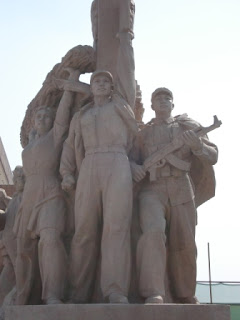
Tienanmen Square: Revolutionary History and Olympic Absurdity
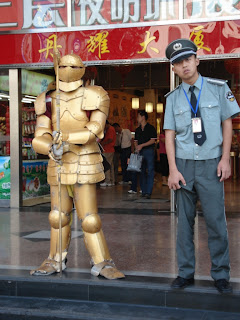
Like many Asian cities the old and the new meet at odd angles on the streets of Beijing.
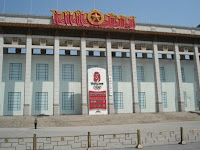
This is a picture of a fifteen foot clock counting down the minutes to the Olympic games. We ran across the street to the center of Tienanmen Square, where Xiao was searched and they didn't even look at me even while I stood next to Xiao the whole time.
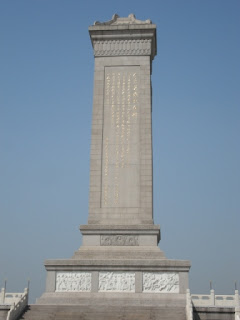 At the Center of the Tienanmen Square: the monument to those who died during the revolution.
At the Center of the Tienanmen Square: the monument to those who died during the revolution.After visiting Tienanmen Square and checking me into a cool back alley hostel called LeoHostel, Xiao and I walked around the HuTongs. HuTong basically means a small street created by having many walled square houses built near each other. Some HuTongs are wide enough for a single car to pass with people pressed up against the walls, others are very tiny. The Hutongs were built many centuries ago and are slowly being demolished or taken over by rich Beijingese. However, at the moment, you can still find some authentic HuTong action:
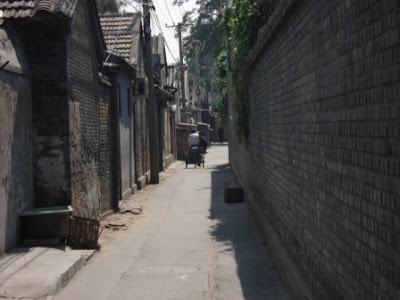
Xiao and I went in search of his birth place and found some beautiful little sights along the way:
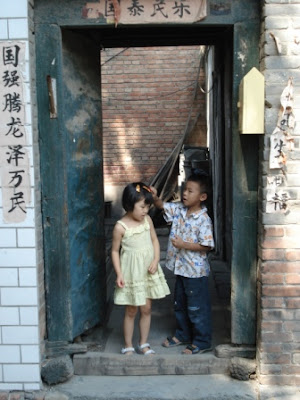 This is a classic HuTong scene. The entrance to a communal living area. Before the revolution, only the aristocracy lived in the HuTong's close to the Imperial Palace, size and distance determined by rank and relation. They had entry ways like this and then large front and back courtyards and several buildings all for one family. When the people "liberated" themselves (and Beijing's housing property) many poorer families would take over an aristocratic family's home and thus the HuTong culture was born.
This is a classic HuTong scene. The entrance to a communal living area. Before the revolution, only the aristocracy lived in the HuTong's close to the Imperial Palace, size and distance determined by rank and relation. They had entry ways like this and then large front and back courtyards and several buildings all for one family. When the people "liberated" themselves (and Beijing's housing property) many poorer families would take over an aristocratic family's home and thus the HuTong culture was born.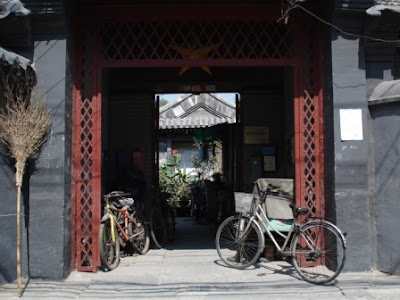
We found Xiao's old home! (Hint: it's that doorway to the right.)
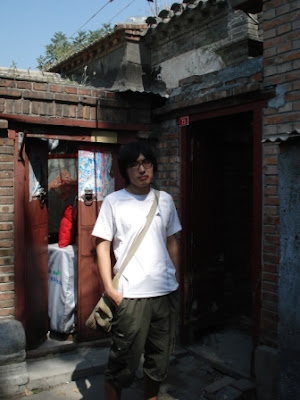 There are public toilets every so often and everyone in the HuTong shares them as it is rare to have one's own.
There are public toilets every so often and everyone in the HuTong shares them as it is rare to have one's own.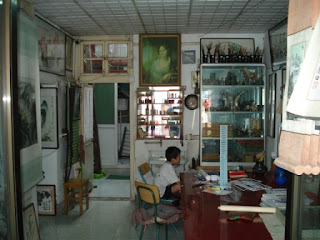 At the exit of one of the HuTongs we walked through, Xiao stopped to see a traditional Chinese picture framer. He was a delight to meet, and was pleased to explain his 32 step traditional process to Xiao. I bought some accoutrements for practicing calligraphy and we learned about the most famous modern political Buddhist in China, who happened to have been the framer's acquaintance. Apparently Buddhism might have been mostly wiped out if it hadn't been for this one man's political influence. In any case, here the framer demonstrates technique:
At the exit of one of the HuTongs we walked through, Xiao stopped to see a traditional Chinese picture framer. He was a delight to meet, and was pleased to explain his 32 step traditional process to Xiao. I bought some accoutrements for practicing calligraphy and we learned about the most famous modern political Buddhist in China, who happened to have been the framer's acquaintance. Apparently Buddhism might have been mostly wiped out if it hadn't been for this one man's political influence. In any case, here the framer demonstrates technique: she she, mister framer man.
she she, mister framer man.Xiao thought it would be auspicious to visit the original site of the Beijing University, where all the modern Beijing intellectuals were trained. Unfortunately, the gate is locked, and the surroundings are now filled with tenants, so this is the best picture we could get. So, this is me, in front of a gate, with a building in the background, which was the original site of Beijing University. It's a bit like going to visit Oxford, but only getting a picture on the side of the road nearby.
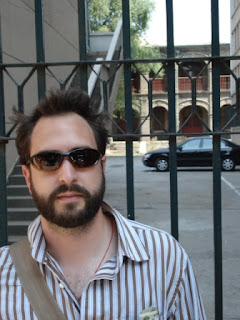
Here Xiao gives his best "I'm not posing," pose in front of a monument to important revolutionary dates with sayings and descriptions chiseled in Mandarin and, you guessed it, French.
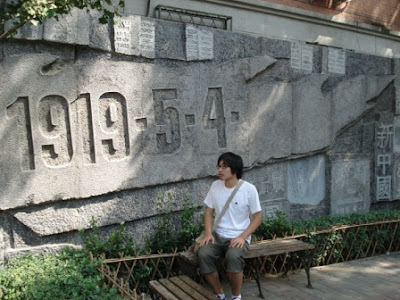
So that was my Beijing experience in pictures; minus the eating of hundreds of chicken wings with Xiao's middle school buddies, and the scam where I lost 690 Yuan, and the hanging out with Aya when we got rockstar treatment at the best Peking Duck place in town (Da Dong rocks!) and again when we got shoulder and foot massages at an underground spa. (Not underground like illegal or artsy, but literally under the ground.) You're the best Aya!
Hu is also the best, cause he drove me around a bunch, and I only got to buy him lunch once.
Here is Xiao and Hu in all their glory:

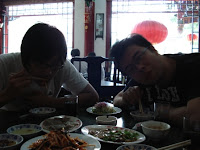
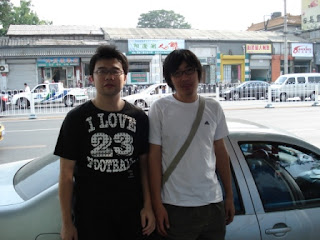 Bye bye Beijing! I'm off to Lhasa.
Bye bye Beijing! I'm off to Lhasa.

No comments:
Post a Comment